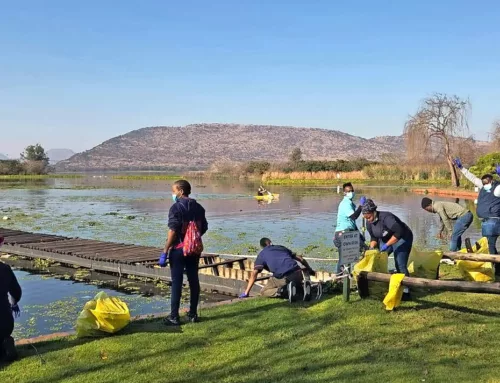ARVs found in rivers and drinking water
A recent study by North West University (NWU) has revealed the presence of antiretroviral (ARV) drug traces in wastewater and drinking water sources in North West and Gauteng.
Samples were also taken from three rivers feeding Hartbeespoort Dam.
The study, conducted across 72 sites in the North West and Gauteng, found measurable levels of ARVs like Lopinavir and Efavirenz downstream of wastewater treatment plants and even in tap water. While concentrations in drinking water are currently deemed low and not harmful, the long-term ecological impact of this continuous pharmaceutical discharge into water systems is a growing concern.
Among other sites, water samples were taken from the Crocodile River, Hennops River and Jukskei Rivers, feeding Hartbeespoort Dam.
The research found high amounts of ARVs in surface water, especially downstream from wastewater treatment plants. The most common drugs detected were lopinavir and efavirenz, with levels at some spots far above what is seen in other countries. In places like Gauteng and North West provinces, ARVs showed up in groundwater, rivers, and even municipal tap water. Some samples had concentrations over safe limits, raising worries about long-term effects on people and nature.
In urban areas with lots of industry, like parts of Gauteng, the levels are highest because of more people on treatment and weaker wastewater systems. The research tested sites in rivers like the Vaal and Crocodile, finding ARVs mixed with other pollutants like antibiotics. While levels in drinking water are often very low, the team warns that ongoing exposure could add up over time.
The research highlighted alarming effects on aquatic ecosystems and wastewater management systems. Freshwater snails exposed to ARVs exhibited altered embryonic development, while bacteriophages – viruses critical to controlling bacteria in wastewater treatment – were significantly impacted. Such disruptions could lead to bacterial bloom and reduced water quality. The report noted: “The consumption of any type of exogenous drug by any organism in sufficient quantities may intervene with the regulation of metabolic systems and bring about adverse effects. The presence of antiretrovirals in water can be considered a hidden or latent risk.”
Further, the study highlighted the potential risks for human health: “Humans are also exposed to these compounds via drinking water, and at concentrations exceeding calculated hazard quotients. Although not found in this study, humans and other organisms may potentially ingest antiretrovirals and their breakdown products via aquatic organisms such as fish.”
In response, the Department of Water and Sanitation (DWS) said that it will engage the North West University (NWU) on the study findings of traces of anti-retroviral (ARV) medicines in water resources. “The presence of ARV residues in drinking water is harmless, although prolonged exposure to the broader population may lead to antimicrobial resistance, a subject of ongoing research. Pharmaceuticals such as ARVs are drugs used to treat diseases – they do not cause diseases. Therefore, the presence of traces of ARVs in the water will not result in people contracting HIV,” DWS said in a statement.
“South Africa has rolled out a massive programme to curb HIV and AIDS, including access to ARVs to reduce the risk of the onset of AIDS. As a result, traces of ARVs are entering municipal sewage systems and passing through these systems into rivers. These traces of ARVs can then also be present in water that has been extracted from the rivers by municipalities to be treated and supplied as potable water.”
The department said that most existing wastewater treatment works have not been designed to remove contaminants of emerging concern (CEC). “Low concentrations of ARVs were found in some of the drinking water samples. There is a possibility that high concentrations of ARVs in sewage or municipal wastewater might reduce the effectiveness of the wastewater treatment works in removing bacteria from the wastewater. Further research is required in this regard. At present, there is limited knowledge of environmental toxicity, potential adverse effects on ecosystems and viral resistance of these compounds. The study did not find any ARVs in fish.”
















